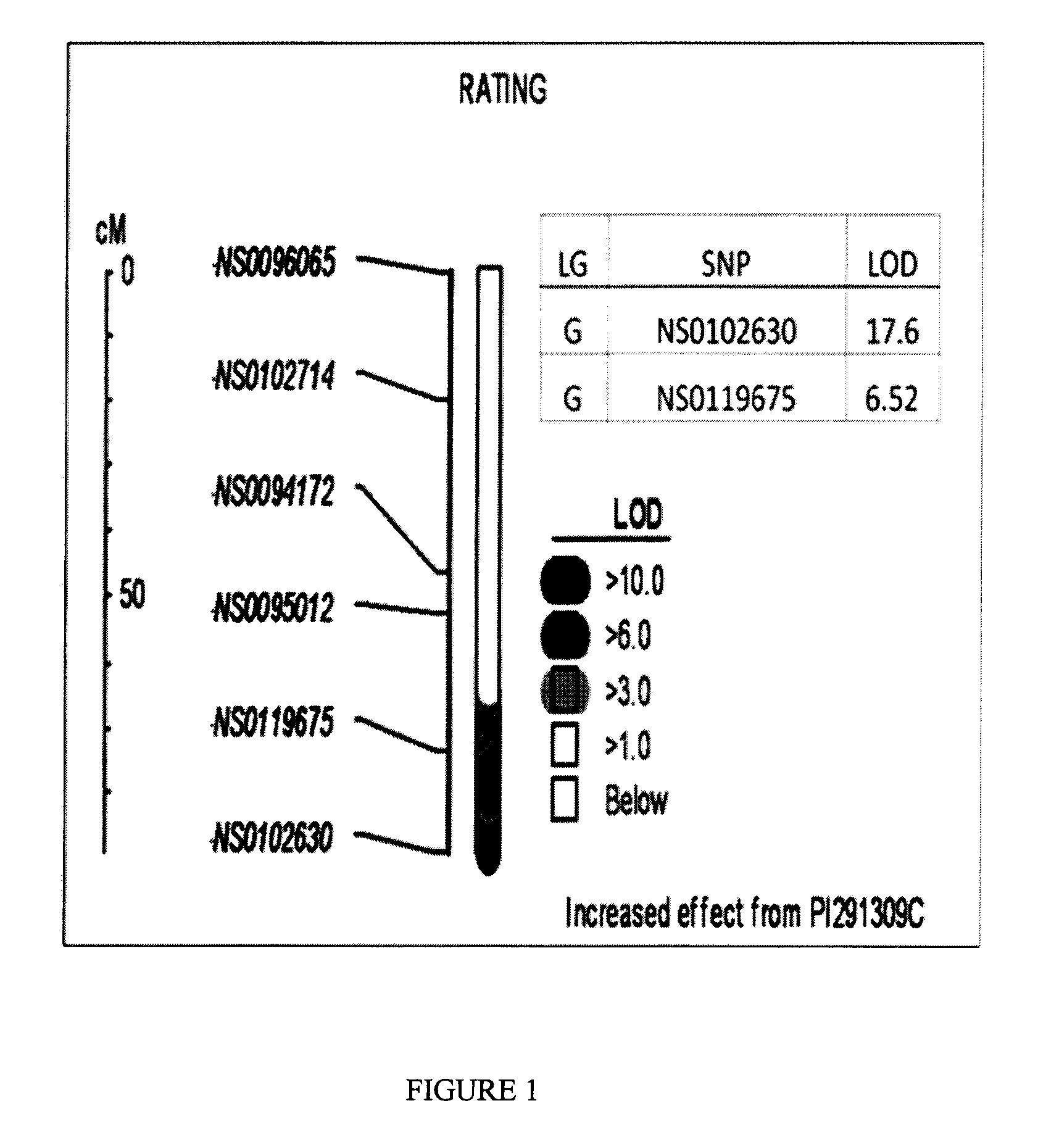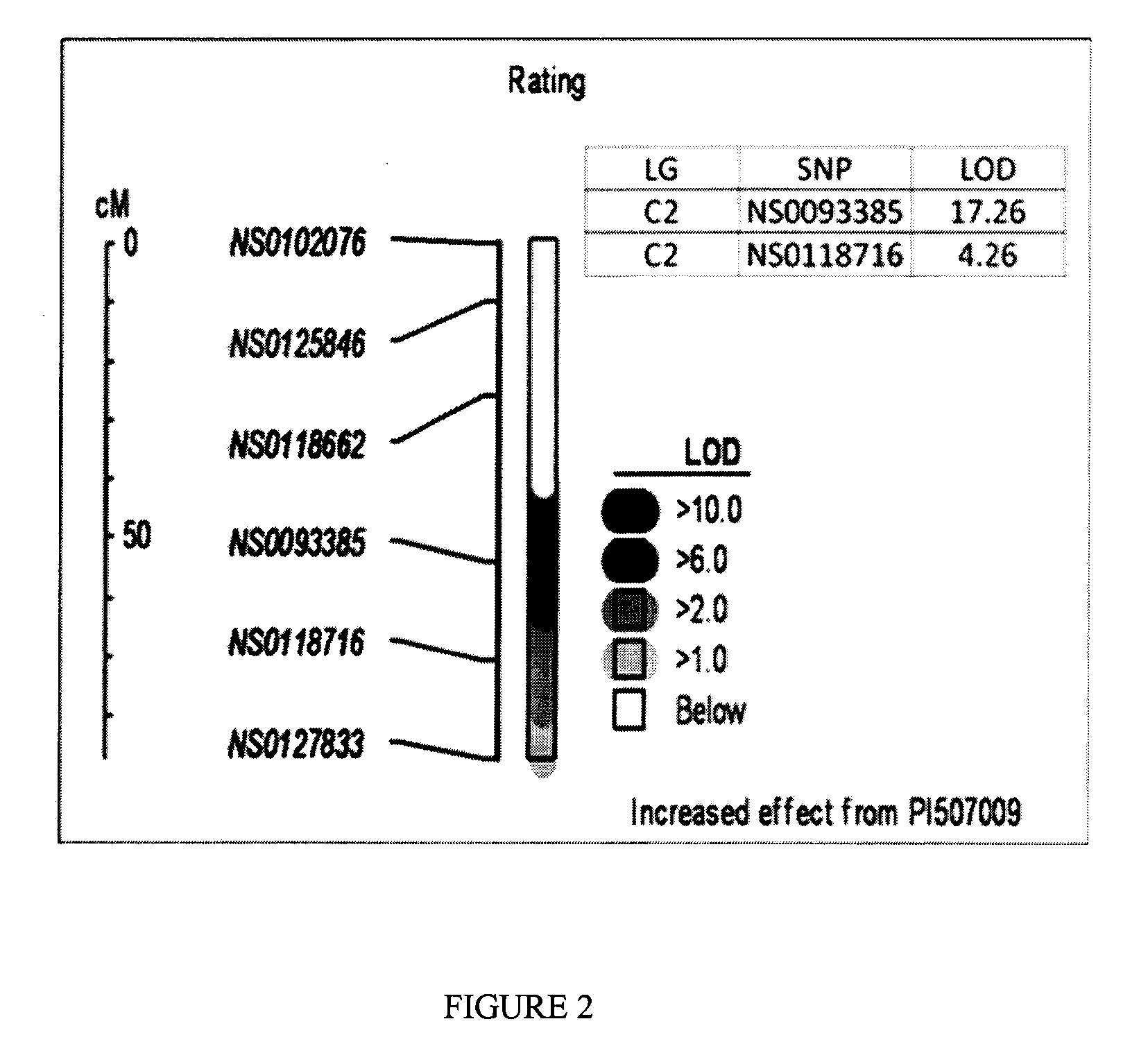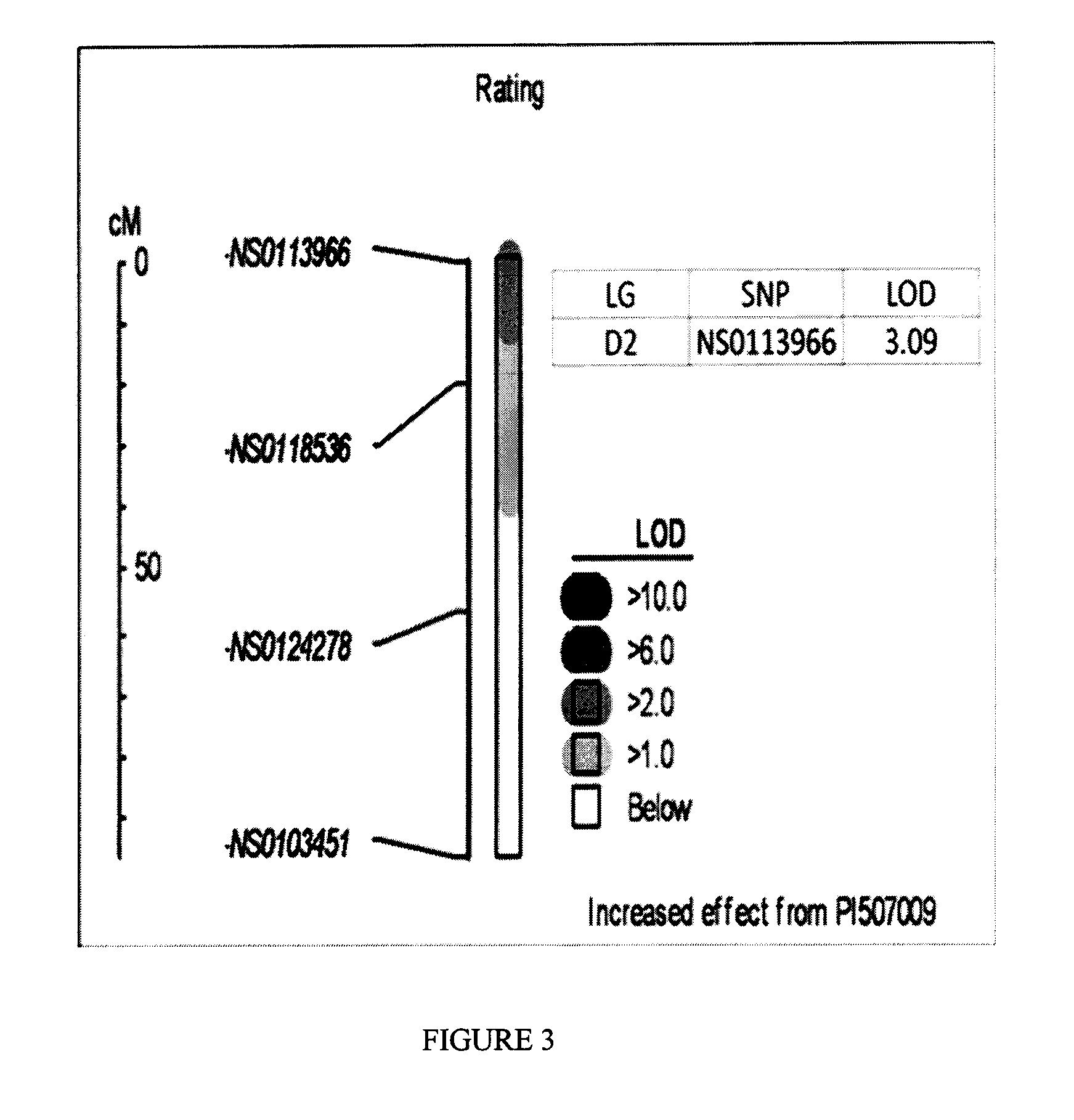Method to identify asian soybean rust resistance quantitative trait loci in soybean and compositions thereof
a quantitative trait and soybean technology, applied in the field of plant breeding and disease resistance, can solve the problems of time-consuming and labor-intensive, affecting the yield of soybeans in the united states, and conferring resistance to asr can be time-consuming, so as to achieve high oil production, increase yield, and protein production
- Summary
- Abstract
- Description
- Claims
- Application Information
AI Technical Summary
Benefits of technology
Problems solved by technology
Method used
Image
Examples
example 1
Testing of Soybean Accessions for ASR Resistance Using the Detached Leaf Assay
[0211]Forty putative ASR resistant accessions were screened for ASR resistance. Leaf assays for resistance to ASR were performed on these 40 lines, and appropriate susceptible accessions as controls, as described in U.S. patent application Ser. No. 11 / 805,667. Plants were scored as having a degree of resistance indicated by a numerical rating from 1 to 5; 1—being immune, 2—demonstrating red / brown lesions over less than about 50% of the leaf area, 3—demonstrating red / brown lesions over greater than about 50% of the leaf area, 4—demonstrating tan lesions over less than about 50% of the leaf area and 5—demonstrating tan lesions over greater than about 50% of the leaf area, i.e. completely susceptible. An average rust severity score over multiple tests of 1.5 was obtained for accession PI291309C, a maturity-group-2 line, and for PI507009, a maturity-group-6 line, when infected with a North American isolate of ...
example 2
Exemplary Marker Assays for Detecting ASR Resistance
[0215]In one embodiment, the detection of polymorphic sites in a sample of DNA, RNA, or cDNA may be facilitated through the use of nucleic acid amplification methods. Such methods specifically increase the concentration of polynucleotides that span the polymorphic site, or include that site and sequences located either distal or proximal to it. Such amplified molecules can be readily detected by gel electrophoresis, fluorescence detection methods, or other means. Exemplary primers and probes for amplifying and detecting genomic regions associated with ASR resistance are given in Table 2.
example 3
Oligonucleotide Hybridization Probes Useful for Detecting Soybean Plants with ASR Resistance Loci
[0216]Oligonucleotides can also be used to detect or type the polymorphisms associated with the ASR resistance locus disclosed herein using hybridization-based SNP detection methods. Exemplary oligonucleotides capable of hybridizing to isolated nucleic acid sequences which include the polymorphism are provided. It is within the skill of the art to design assays with experimentally determined stringency to discriminate between the allelic states of the polymorphisms presented herein. Exemplary assays include Southern blots, Northern blots, microarrays, in situ hybridization, and other methods of polymorphism detection based on hybridization. Exemplary oligonucleotides for use in hybridization-based SNP detection are provided in Table 3. These oligonucleotides can be detectably labeled with radioactive labels, fluorophores, or other chemiluminescent means to facilitate detection of hybridi...
PUM
| Property | Measurement | Unit |
|---|---|---|
| length | aaaaa | aaaaa |
| temperature | aaaaa | aaaaa |
| temperature | aaaaa | aaaaa |
Abstract
Description
Claims
Application Information
 Login to View More
Login to View More - R&D
- Intellectual Property
- Life Sciences
- Materials
- Tech Scout
- Unparalleled Data Quality
- Higher Quality Content
- 60% Fewer Hallucinations
Browse by: Latest US Patents, China's latest patents, Technical Efficacy Thesaurus, Application Domain, Technology Topic, Popular Technical Reports.
© 2025 PatSnap. All rights reserved.Legal|Privacy policy|Modern Slavery Act Transparency Statement|Sitemap|About US| Contact US: help@patsnap.com



